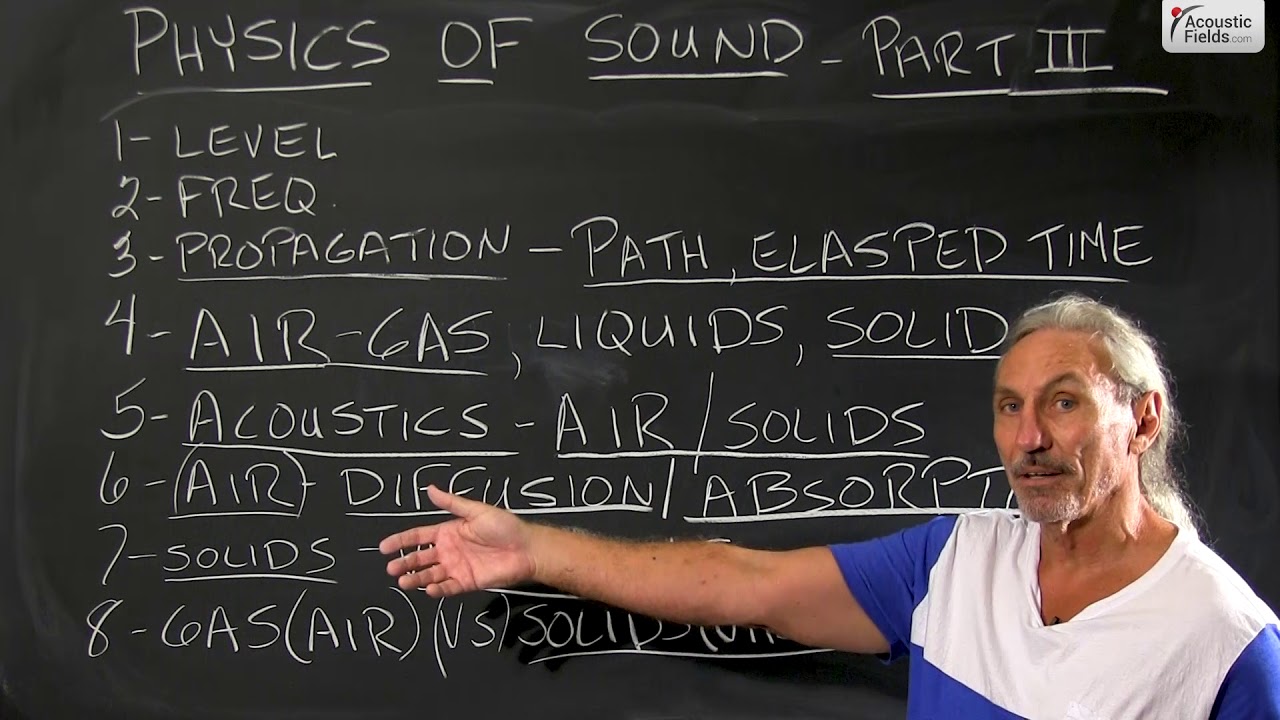Today we’re going to talk about the physics of sound part 3. Part 1 we talked about level or strength, amplitude. Part 2 we talked about frequency. This is going to be about propagation. Where does level, frequency travel through if you will?
Well, we know that we have paths and it’s all about going through stuff: air, solids, liquids. Sound goes through all three. And the time it takes for it to do that is influenced by whether it’s a gas, liquid or solid. So we’ve got to keep all that in mind. But we can forget about the other stuff because in acoustics we’re really talking about air and solids. Those are our two paths of propagation. That’s what we have to deal with when we deal with sound. In our rooms, the treatment side of it, everything is moving through the air. We’re talking about the pressure from the lower frequencies, we’re talking about the reflections off all the walls, ceilings and floors.
So we have two tools basically at our disposal to treat the energy that goes through the air that’s propagated through the air. We have diffusion and absorption. Solids, that’s our barrier, our noise, that’s our shell of our studio or our room and that’s all about vibrations. Now, energy that travels through air versus energy that travels through solids. Same kind of physics, same kind of science. But the key to understanding, the difference between the two is in the overlap of the sciences.
So energy that moves through air has a different signature to it than energy that moves through solids, once it’s in the medium. So our real goal in acoustics when we’re dealing with the transmission of noise – we’re really dealing with the transmission of lowering the strength or the amplitude level of the frequency.
So we get all three working together in the same medium whether it’s an air, whether it’s a solid, whether it’s a gas, it doesn’t matter. We’re using all three of those variables to deal with it and that’s what’s so complicated for people to understand I think with barrier technology is that – well, I’m just going to put up this material to stop this noise without really knowing about the property of the noise, the strength and the amplitude of it, the strength or the amplitude of it and the frequency and not knowing what the material is designed to do against that amplitude and frequency.
And that’s where the problems arise. And you’ll spend all that time and money on building something and you’ll get in the room and you won’t be able to hear what you want to hear inside the room and you won’t be able to isolate from the noise. And here’s another problem with the barrier stuff with the solids. You can build something you think will stop the noise. And when it doesn’t you may have to tear the whole thing out and start over because what you built may not match the frequency and the level of the problem. So you can really shoot yourself in the foot in terms of labor and materials and budget if you don’t do your measurements first and design your material, your solid material to isolate the noise from correctly to match frequency and amplitude.
So I hear a lot of times people put up some foam to stop the garbage truck. Won’t work. Foam is a sound absorption technology, not a barrier technology. So always look at level frequency and what those two are moving through to give you an idea of what you should do for treatment.
—
This is an unedited transcript from our video series from Acoustic Fields. There will be some errors in grammar and sentence structure that occur during this translation process.
For complete understanding and comprehension, please view the video which is included in this text. For any additional information regarding this topic or others relating to room acoustics, please contact us directly at:
P: 520 – 392 – 9486








Hi Dennis
i work in the fire industry and we use a Vox meter to record the readings and a Vox box to create the sound through the PA speaker system we take readings in different parts of a room or building i would like to know do we use White noise or Pink noise for this application. Your help will be greatly appreciated
Many Thanks
Pregs Moodley
P, Use both and compare the numbers.